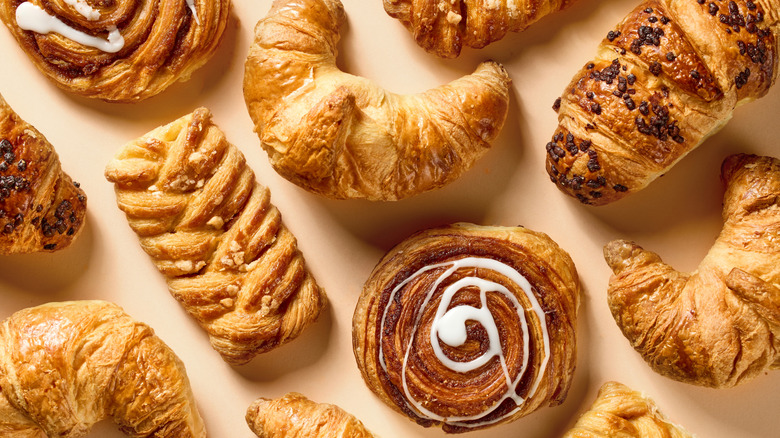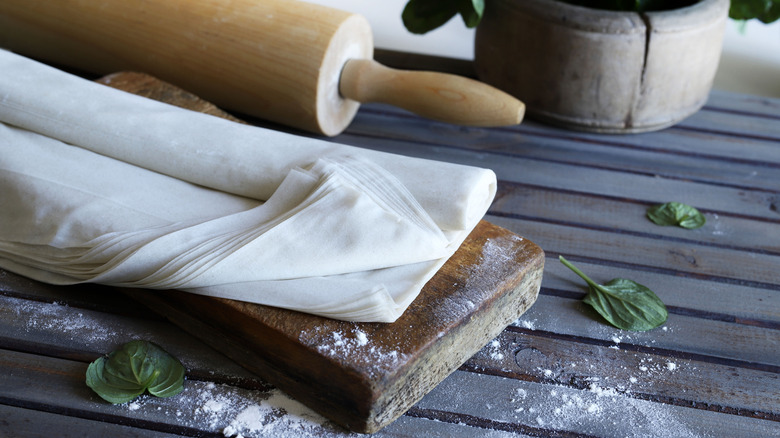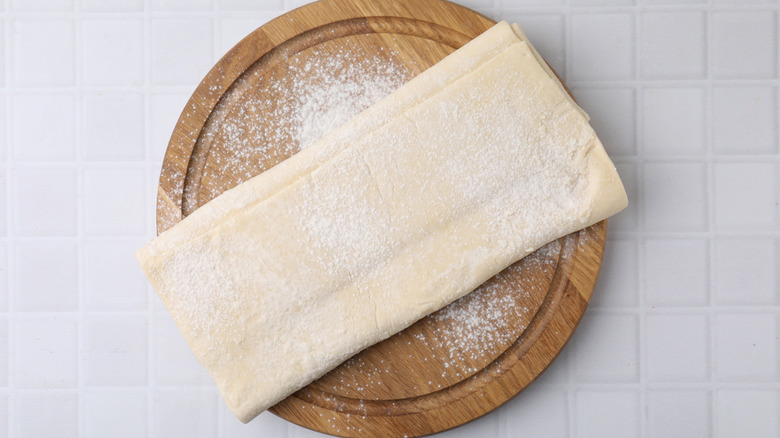What's The Difference Between Phyllo And Puff Pastry Dough?
If you've ever found it hard to resist a flaky pastry, rest that assured you're not the only one. All around the world, there are countless varieties of flaky pastry treats. From Greece's spanakopita and French croissants to curry beef triangles that hail from Hong Kong and many more, you can never run out of new sweet and savory dishes to try.
Similar as they may be in texture, not all flaky pastries are made equal. The largest difference comes down to whether they're made from phyllo dough or puff pastry. Although frequently mistaken for one another, these two are not at all the same thing.
The fat content is primarily what sets phyllo and puff pastry apart. This is because phyllo uses oil and puff pastry often calls for butter or shortening. Moreover, as you dig deeper into their histories, production methods, and common applications, even more differences arise.
Phyllo is a perfect choice for Greek and Middle Eastern delicacies
Phyllo requires only pantry staples of flour, water, vinegar, and olive oil. You can probably guess that it is quite low-fat and a relatively healthy choice compared to other pastry crusts. Everything is mixed together to make a dough that is then kneaded by hand, refrigerated overnight, and then flattened into paper-thin sheets. When it comes time for baking, they are stacked on top of each other to make a crisp, airy crust that shatters with lightness upon first bite. The phyllo sheets are prone to drying out, so a bit of fat is usually brushed between the layers.
Phyllo likely originated in Turkey and has become an irreplaceable part of Middle Eastern and Mediterranean cuisines. Aside from spanakopita, you can find it in baklava — a phyllo-based dessert loaded with honey and chopped nuts. Then, there's Turkish specialty börek, which is filled with cheese, meat, vegetables, and a wide variety of other ingredients.
When you're baking at home, feel free to get creative with phyllo. It's a marvelous shortcut for simple and delicious treats, especially if you're using store-bought phyllo dough. Wrapped around feta cheese blocks and baked to perfection, it's pure heaven in the form of palm-sized, honey-coated feta pockets. Like some fruity sweetness to satisfy the taste buds? Apple strudel brings it in spades with every luscious, flavor-melting bite.
Puff pastry dough is richer
Puff pastry dough is made from laminated dough through a process that requires time and precision. It starts with placing the butter (or other solid fats) between the dough then folding and rolling it to create a thin layer. This is repeated multiple times until there are up to hundreds of layers of pastry dough. During baking, the water content in the butter creates steam, causing the dough to rise and puff up. Since butter plays such a key role in the process, puff pastry's fat content is high when compared to phyllo. This also means that it's also richer in taste and thicker in texture than phyllo.
Puff pastry's origin can be traced back to France, where it's the star of the popular croissant. You can also taste its in palmiers (elephant-ear-shaped cookies) or mille-feuille, a decadent dessert layered with puff pastry and pastry cream. Beyond French cuisine, puff pastry has applications in both sweet and savory dishes. It's just as marvelous in fruity turnovers, Danish pastry, and tarts as it is in a pot pie, beef Wellington, or sausage rolls.
So, the only question that remains is whether puff pastry and phyllo can be used interchangeably. The general answer is no since their textural nuances will affect the outcome of the dish. Both are amazing in their own ways, and you can make the most of each when using them with the right recipe.


